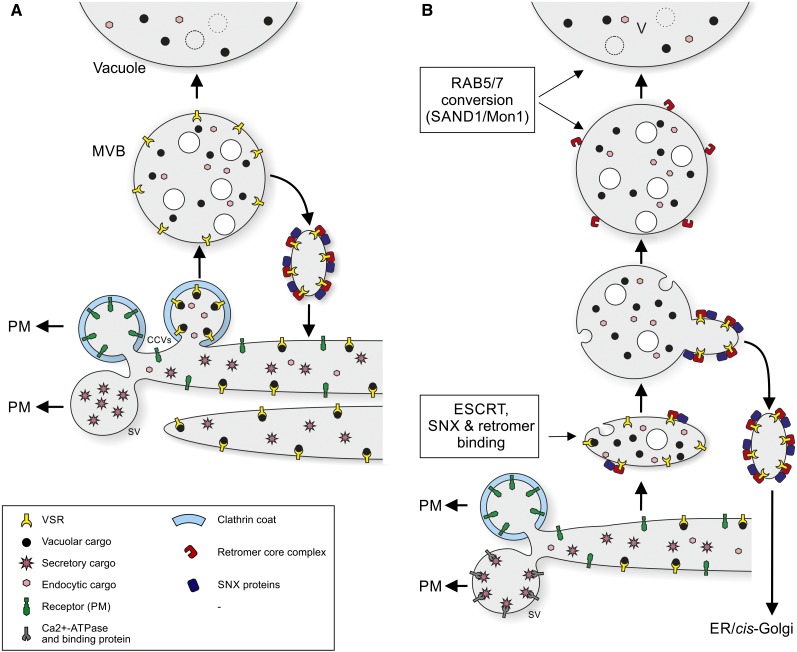Figure 2.
Options for the sorting of soluble secretory and vacuolar cargo molecules at the TGN, together with possible models for post-Golgi recycling of VSRs. In option A, there are two classes of CCV formed at the TGN: one for recycling membrane proteins/receptors back to the PM after they have been internalized and transported to the EE(TGN) and the other serving to package VSR-ligand complexes for transport to the LE(MVB) and LE(PVC). Ligands dissociate from the VSRs in the MVBs, and retromer-coated carriers transport the VSRs back to the TGN. Secretory proteins are passively sorted into secretory vesicles at the TGN. This option is favored by Hwang (2008), De Marcos Lousa et al. (2012), Kang et al. (2012), and Xiang et al. (2013). In option B, it is proposed that, in analogy to mammalian and yeast cells, secretory proteins are actively sequestered into secretory vesicles via Ca2+-binding proteins/Ca2+-ATPase. In contrast, VSR-ligand complexes passively leave the Golgi stack through maturation/transformation of the TGN, which is released from the stack. As maturation proceeds, VSR-ligand dissociation takes place and the VSRs become concentrated in retromer carriers for transport back to the ER/cis-Golgi. In this model, there is only one type of CCV that is responsible for recycling membrane proteins back to the PM. Evidence for this option has been given by Niemes et al. (2010a, 2010b) and Robinson and Pimpl (2014a, 2014b).

